Photography can be a real money pit. So anything that cuts down the cost of your equipment is a real bonus. Buying teleconverters (or Canon “extenders”) rather than fast prime lenses is one way of making your dollars and cents go a little further.
Teleconverters extend the focal length of your lens by a given amount, such as 1.4x or 2x. You can use them with zooms and primes. So they give you great flexibility at a great price.
If you buy a Nikon teleconverter (or any other brand), you can choose whether to use it or not in any given shooting situation. It’s also smaller, lighter, cheaper, and easier to carry than a longer lens.
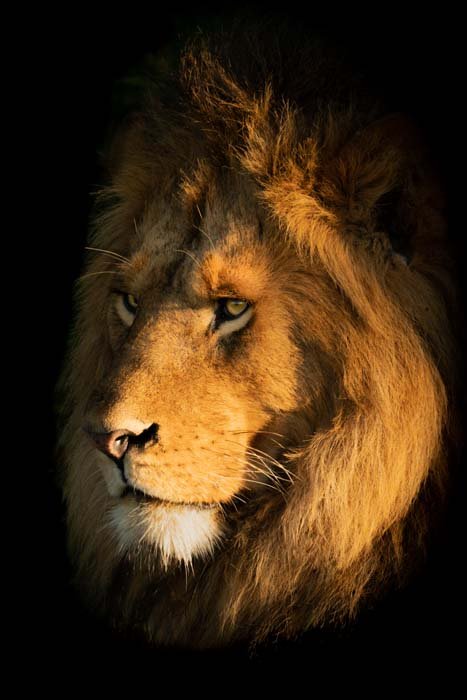
Why I Bought a Nikon Teleconverter
I used to have a Nikon 80-400 mm lens, and I took it with me on all my game drives in Africa. I wanted something similar when I bought my Sony Alpha 1 mirrorless camera. But the nearest available lens (the 100-400 mm) had a maximum aperture of only f/5.6—which was a full two stops worse than my 400 mm prime!
My solution was to buy an f/2.8 70-200 mm and a 2x converter to make the equivalent of a 140-400 mm f/5.6 lens. That gave me the flexibility of zoom lenses while not sacrificing anything in terms of maximum aperture (compared to the 100-400 mm).
If you’re still undecided about buying a teleconverter or wondering how to choose one, read our buying guide at the end.

[Note: ExpertPhotography is supported by readers. Product links on ExpertPhotography are referral links. If you use one of these and buy something, we make a little money. Need more info? See how it all works here.]
The 31 Best Teleconverters
If you’ve decided to buy a teleconverter, here are the best on the market from every major manufacturer. We’ve divided them into lens mount categories.
Note that all products come with a front and rear cap and a carrying case. The listed sizes are the maximum diameter times the distance from the camera body to the lens mount face—the “extra” length when using the teleconverter.
Nikon F-mount
For decades, the Nikon F-mount has been the standard mount for Nikon film cameras and DSLRs. It’s also supported by lens manufacturers such as Sigma and Tamron.
1. Nikon AF-S Teleconverter TC-14E III
The Nikon AF-S teleconverter TC-14E III has a magnification of 1.4x but will reduce your widest aperture by one stop. (AF-S stands for single area autofocus.) It consists of seven lens elements in four groups.
It measures 2.5 x 1.0″ (64 x 24.5 mm) and weighs 6.7 oz (190 g). It’s compatible with most Nikon F-mount lenses, but it will affect the AF on some of them (see Nikon’s teleconverter compatibility table).
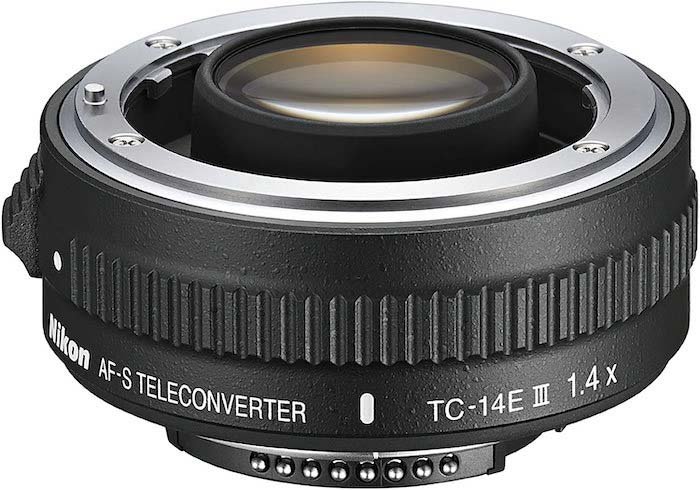
2. Nikon AF-S Teleconverter TC-17E II
This converter has a magnification of 1.7x but will reduce your widest aperture by roughly 1.5 stops. It consists of seven lens elements in four groups.
It measures 2.6 x 1.2″ (66 x 31.5 mm) and weighs 8.8 oz (250 g). It works with most Nikon F-mount lenses, but it will often affect the AF or even stop it from working (see Nikon’s teleconverter compatibility table).
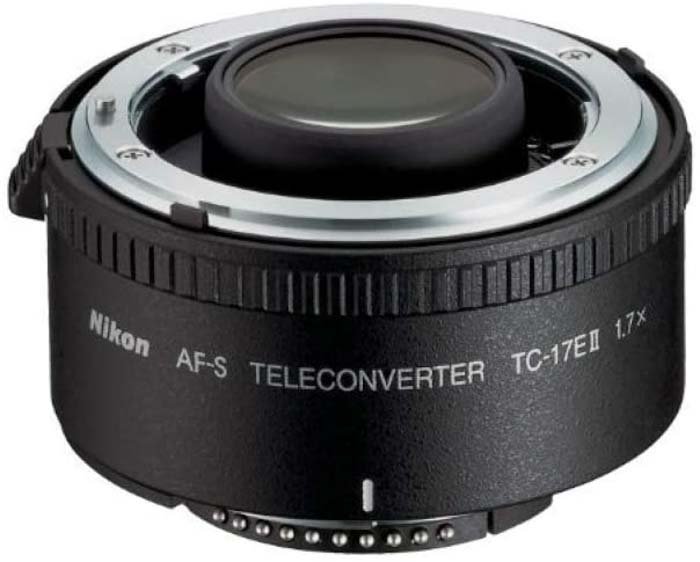
3. Nikon AF-S Teleconverter TC-20E III
The Nikon AF-S TC-20E III has a magnification of 2x but will reduce your widest aperture by two stops. It consists of seven lens elements in five groups.
It measures 2.6 x 1.9″ (66 x 48 mm) and weighs 11.6 oz (330 g). It works with most Nikon F-mount lenses, but it will often affect the AF system or force you to use manual focus (see Nikon’s teleconverter compatibility table).
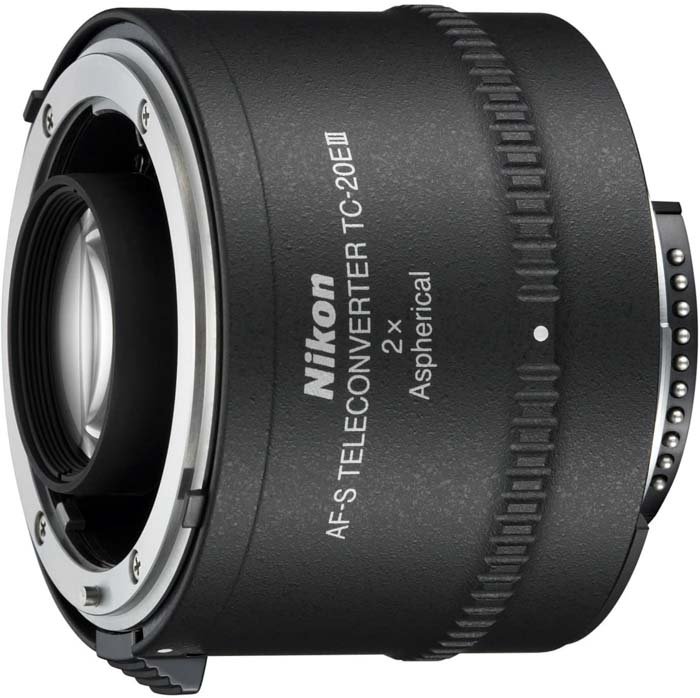
4. Sigma TC-1401 1.4x Teleconverter for Nikon F
This dustproof and splashproof converter has a magnification of 1.4x but will reduce your widest aperture by one stop. It consists of seven lens elements in five groups with Special Low-Dispersion (SLD) glass to combat color aberration.
It measures 2.7 x 1.0″ (68.5 x 25 mm) and weighs 6.7 oz (190 g). And it permits autofocusing up to f/8 with compatible cameras.
It’s designed for the following Sigma Global Vision lenses:
No AF restrictions:
- Sigma 70-200 mm f/2.8 DG OS HSM | Sports
- Sigma 500 mm f/4 DG OS HSM | Sports
AF restrictions:
- Sigma 60-600 mm f/4.5-6.3 DG OS HSM | Sports
- Sigma 100-400 mm f/5-6.3 DG OS HSM | Contemporary
- Sigma 120-300 mm f/2.8 DG OS HSM | Sports
- Sigma 150-600 mm f/5-6.3 DG OS HSM | Sports
- Sigma 150-600 mm f/5-6.3 DG OS HSM | Contemporary
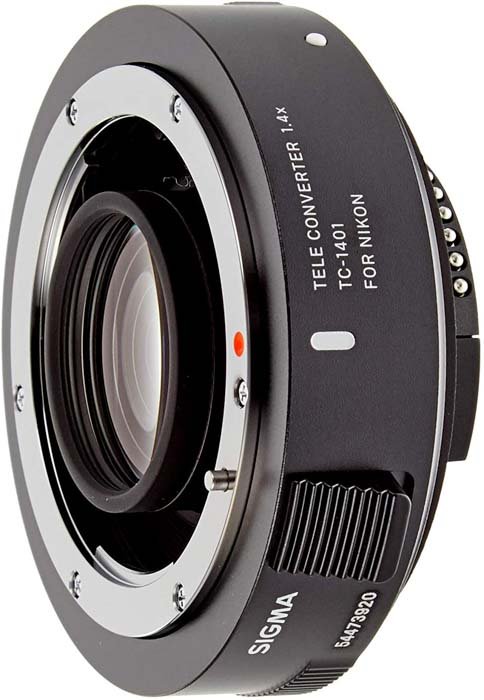
5. Sigma TC-2001 2x Teleconverter for Nikon F
This dustproof and splashproof converter has a magnification of 2x but will reduce your widest aperture by two stops. It consists of ten lens elements in five groups with Special Low-Dispersion (SLD) glass to combat color aberration.
It measures 2.7 x 1.9″ (68.5 x 48.9 mm) and weighs 10.2 oz (290 g). And it permits autofocusing up to f/8 with compatible cameras.
It’s designed for the following Sigma Global Vision lenses:
No AF restrictions:
- Sigma 70-200 mm f/2.8 DG OS HSM | Sports
AF restrictions:
- Sigma 120-300 mm f/2.8 DG OS HSM | Sports
- Sigma 500 mm f/4 DG OS HSM | Sports
Manual focus only:
- Sigma 60-600 mm f/4.5-6.3 DG OS HSM | Sports
- Sigma 100-400 mm f/5-6.3 DG OS HSM | Contemporary
- Sigma 150-600 mm f/5-6.3 DG OS HSM | Sports
- Sigma 150-600 mm f/5-6.3 DG OS HSM | Contemporary
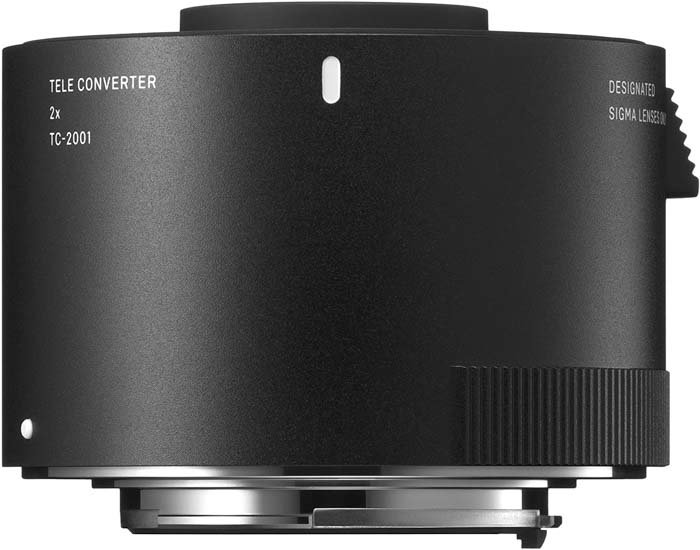
6. Tamron Teleconverter 1.4x for Nikon F
This moistureproof and dust-resistant converter has a magnification of 1.4x but will reduce your widest aperture by one stop. It consists of six lens elements in three groups.
It has one low-dispersion (LD) element and a broadband anti-reflection (BBAR) coating that eliminates ghosting and flare. It measures 2.5 x 0.8″ (62.6 x 21.4 mm) and weighs 6.3 oz (180 g).
It works with the following Tamron lenses:
- Tamron SP 70-200 mm f/2.8 Di VC USD G2
- Tamron SP 100-400 mm f/4.5-6.3 Di VC USD
- Tamron SP 150-600 mm f/5-6.3 Di VC USD G2
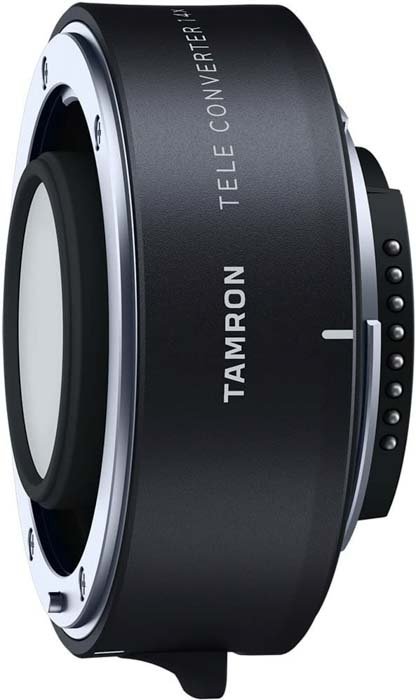
7. Tamron Teleconverter 2.0x for Nikon F
This moistureproof and dust-resistant converter has a magnification of 2x but will reduce your widest aperture by two stops. It consists of nine lens elements in five groups.
It has one low-dispersion (LD) element and a broadband anti-reflection (BBAR) coating that eliminates ghosting and flare. It measures 2.5 x 2.1″ (62.3 x 53.6 mm) and weighs 10.8 oz (305 g).
It works with the following Tamron lenses:
- Tamron SP 70-200 mm f/2.8 Di VC USD G2
- Tamron SP 100-400 mm f/4.5-6.3 Di VC USD
- Tamron SP 150-600 mm f/5-6.3 Di VC USD G2
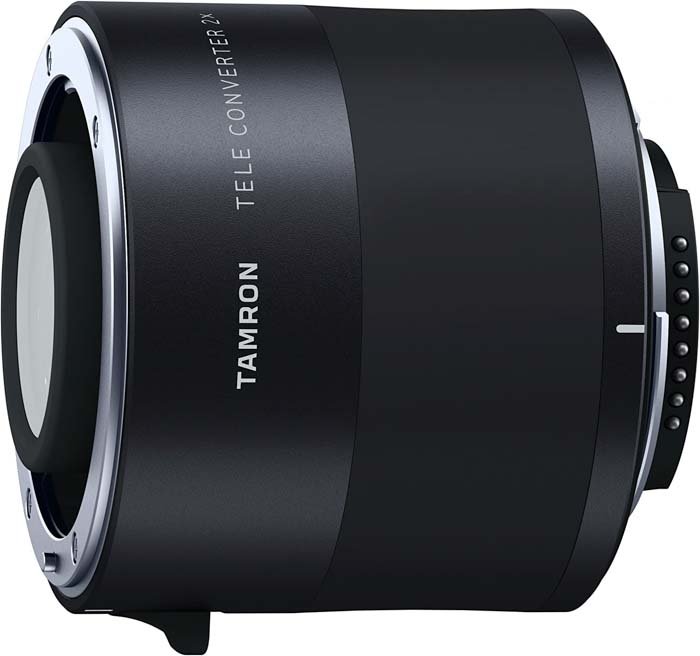
Nikon Z-mount
The Nikon Z-mount is the company’s standard mount for mirrorless cameras like the Z9.
1. Nikon Z Teleconverter TC-1.4x
This converter has a magnification of 1.4x but will reduce your widest aperture by one stop. It consists of six lens elements in four groups.
It includes one aspherical element to reduce aberration and fluorine-coated front and rear elements to repel dust, grease, water, and dirt. It measures 2.8 x 0.7″ (72 x 18.5 mm) and weighs 7.8 oz (220 g).
It works with the following Nikkor (Nikon) lenses:
- NIKKOR Z 70-200 mm f/2.8 VR S
- NIKKOR Z 100-400 mm f/4.5-5.6 VR S
- NIKKOR Z 400 mm f/2.8 TC VR S
- NIKKOR Z 400 mm f/4.5 VR S
- NIKKOR Z 800 mm f/6.3 VR S
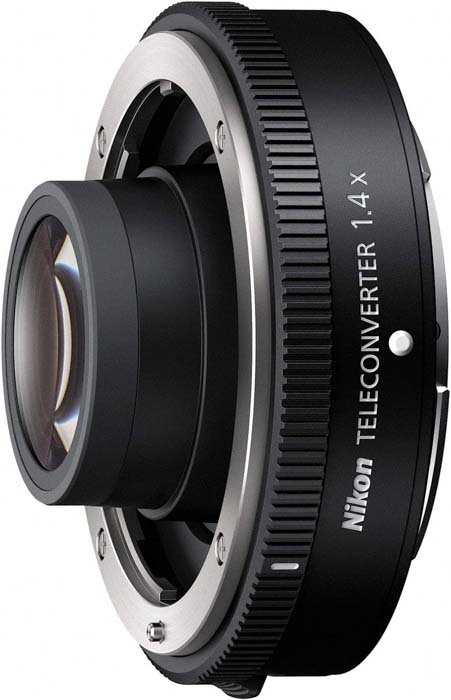
2. Nikon Z Teleconverter TC-2.0x
This 2x teleconverter has a magnification of 2x but will reduce your widest aperture by two stops. It consists of eight lens elements in five groups.
It includes one aspherical element to reduce aberration and fluorine-coated front and rear elements to repel dust, grease, water, and dirt. It measures 2.8 x 1.3″ (72 x 32.5 mm) and weighs 9.5 oz (270 g).
It works with the following Nikkor (Nikon) lens:
- NIKKOR Z 70-200 mm f/2.8 VR S
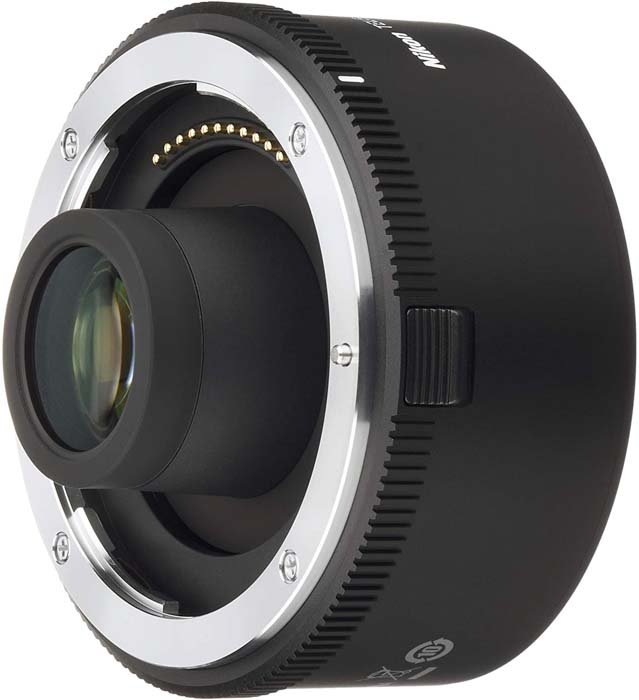
Canon EF-mount
The EF lens mount is the standard for the Canon EOS line of SLR digital and film cameras. EF is an abbreviation for “electro-focus.”
1. Canon Extender EF 1.4x III
This dust-resistant and water-resistant converter has a magnification of 1.4x but will reduce your widest aperture by one stop. It consists of seven lens elements in three groups.
It has anti-reflection and other coatings to minimize ghosting and flare. It measures 2.8 x 1.1″ (72 x 27.2 mm) and weighs 7.9 oz (225 g).
It works with Canon’s flagship professional L-series range of telephoto lenses. But on some fast primes, you may need to fine-tune the AF.
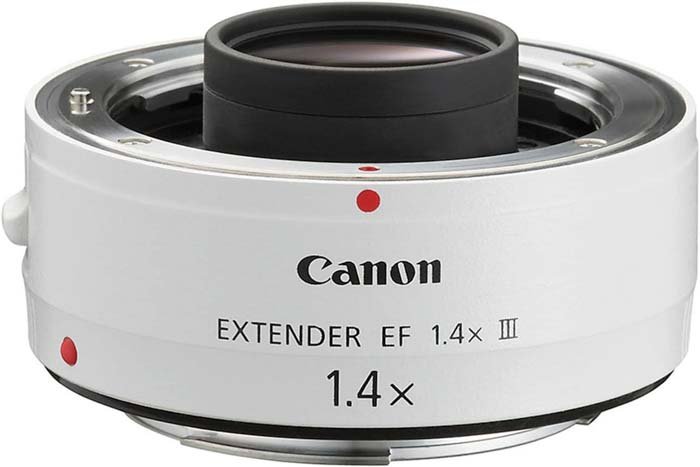
2. Canon Extender EF 2.0x III
This dust-resistant and water-resistant converter has a magnification of 2x but will reduce your widest aperture by two stops. It consists of nine lens elements in five groups.
It has anti-reflection and other coatings to minimize ghosting and flare. It measures 2.8 x 2.1″ (72 x 52.7 mm) and weighs 11.5 oz (325 g).
It works with the telephoto and telephoto zoom lenses within Canon’s flagship professional L-series range, but you may need to fine-tune the AF on some fast primes.
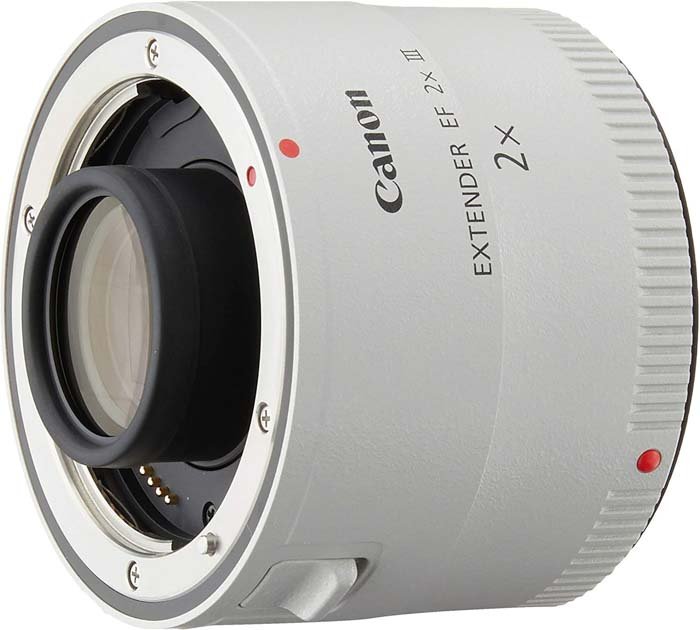
3. Sigma TC-1401 1.4x Teleconverter for Canon EF
This dustproof and splashproof teleconverter magnifies 1.4x but will reduce your widest aperture by one stop. It consists of seven lens elements in five groups.
It has special low-dispersion (SLD) glass to combat color aberration. It measures 2.7 x 1.0″ (68.5 x 25 mm) and weighs 6.7 oz (190 g). And it permits autofocusing up to f/8 with compatible cameras.
It’s designed for the following Sigma Global Vision lenses:
No AF restrictions:
- Sigma 70-200 mm f/2.8 DG OS HSM | Sports
- Sigma 500 mm f/4 DG OS HSM | Sports
AF restrictions:
- Sigma 60-600 mm f/4.5-6.3 DG OS HSM | Sports
- Sigma 70 mm F2.8 DG MACRO | Art
- Sigma 100-400 mm f/5-6.3 DG OS HSM | Contemporary
- Sigma 120-300 mm f/2.8 DG OS HSM | Sports
- Sigma 150-600 mm f/5-6.3 DG OS HSM | Sports
- Sigma 150-600 mm f/5-6.3 DG OS HSM | Contemporary
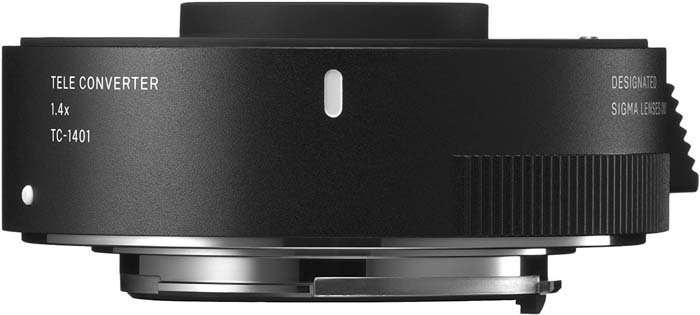
4. Sigma TC-2001 2x Teleconverter for Canon EF
This dustproof and splashproof teleconverter has a magnification of 2x but will reduce your widest aperture by two stops. It consists of ten lens elements in five groups.
It has special low-dispersion (SLD) glass to combat color aberration. It measures 2.7 x 1.9″ (68.5 x 48.9 mm) and weighs 10.2 oz (290 g). And it permits autofocusing up to f/8 with compatible cameras.
It’s designed for the following Sigma Global Vision lenses:
No AF restrictions:
- Sigma 70-200 mm f/2.8 DG OS HSM | Sports
AF restrictions:
- Sigma 120-300 mm f/2.8 DG OS HSM | Sports
- Sigma 500 mm f/4 DG OS HSM | Sports
Manual focus only:
- Sigma 60-600 mm f/4.5-6.3 DG OS HSM | Sports
- Sigma 70 mm f/2.8 DG MACRO | Art
- Sigma 100-400 mm f/5-6.3 DG OS HSM | Contemporary
- Sigma 150-600 mm f/5-6.3 DG OS HSM | Sports
- Sigma 150-600 mm f/5-6.3 DG OS HSM | Contemporary
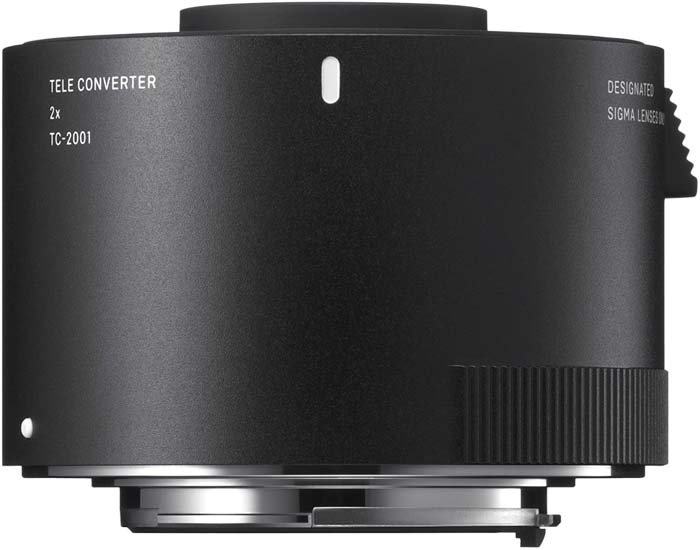
5. Tamron TC-X14 Teleconverter 1.4x for Canon EF
This moistureproof and dust-resistant teleconverter has a magnification of 1.4x but will reduce your widest aperture by one stop. It consists of six lens elements in three groups.
It has one low-dispersion (LD) element and a broadband anti-reflection (BBAR) coating that eliminates ghosting and flare. It measures 2.8 x 1.3″ (70 x 34 mm) and weighs 7.2 oz (204 g).
It works with the following Tamron lenses:
- Tamron SP 70-200 mm f/2.8 Di VC USD G2
- Tamron SP 100-400 mm f/4.5-6.3 Di VC USD
- Tamron SP 150-600 mm f/5-6.3 Di VC USD G2
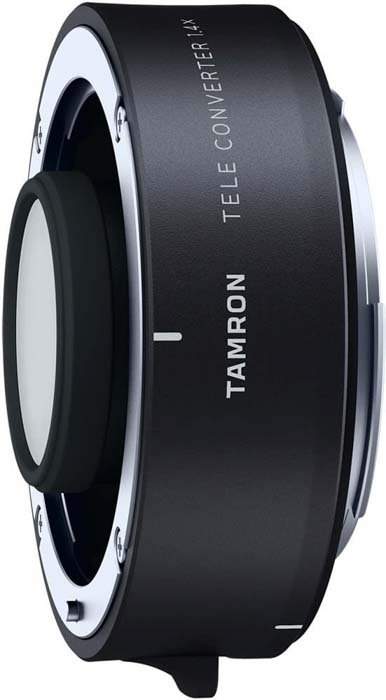
6. Tamron TC-X20 Teleconverter 2.0x for Canon EF
This moistureproof and dust-resistant teleconverter has a magnification of 2x but will reduce your widest aperture by two stops. It consists of nine lens elements in five groups.
It has one low-dispersion (LD) element and a broadband anti-reflection (BBAR) coating that eliminates ghosting and flare. It measures 2.8 x 2.6″ (70 x 66.8 mm) and weighs 12.7 oz (360 g).
It works with the following Tamron lenses:
- Tamron SP 70-200 mm f/2.8 Di VC USD G2
- Tamron SP 100-400 mm f/4.5-6.3 Di VC USD
- Tamron SP 150-60 0mm f/5-6.3 Di VC USD G2
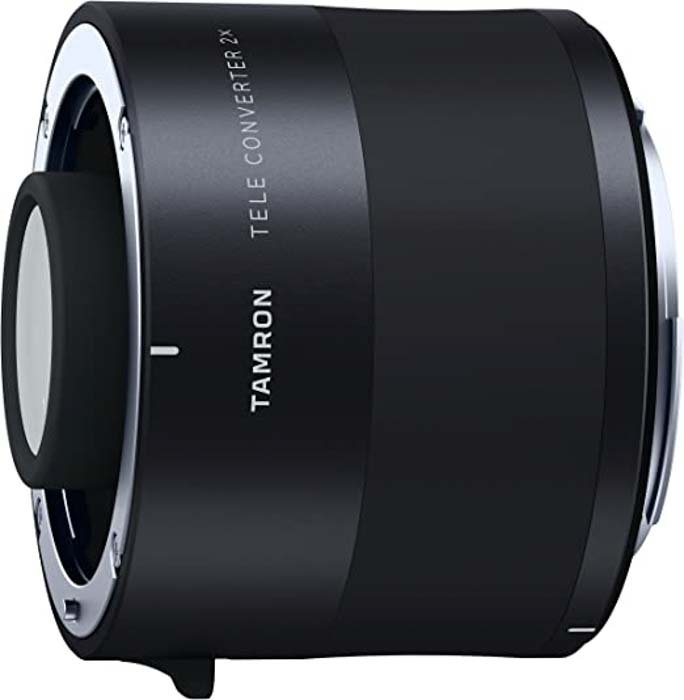
Canon RF-mount
The Canon RF-mount is the company’s standard mirrorless camera and lens mount. As a relatively recent entrant into the mirrorless market, Canon doesn’t yet offer teleconverters that work with all its lenses. And there’s nothing compatible with their 70-200mm zoom lenses.
1. Canon Extender RF 1.4x
This teleconverter has a magnification of 1.4x but will reduce your widest aperture by one stop. It consists of seven lens elements in four groups.
It measures 2.8 x 0.8″ (71.2 x 20.3 mm) and weighs 7.9 oz (225 g). And it works with the following Canon lenses:
- Canon RF 100-500 mm f/4.5-7.1L IS USM (can only be used within 300-500mm range)
- Canon RF 600 mm f/11 IS STM
- Canon RF 800 mm f/11 IS STM
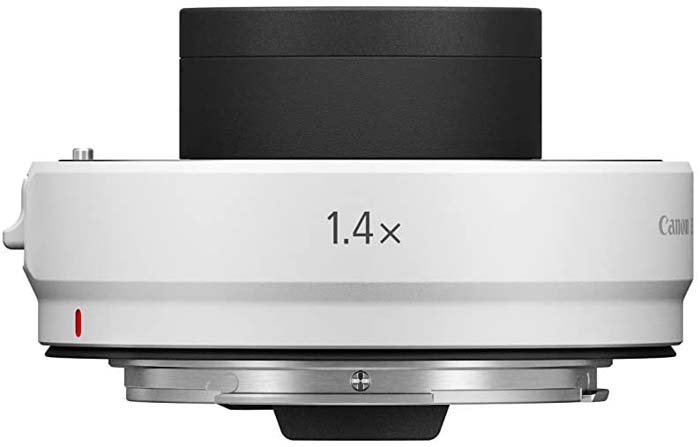
2. Canon Extender RF 2x
This teleconverter has a magnification of 2x but will reduce your widest aperture by two stops. It consists of nine lens elements in five groups.
It measures 2.8 x 1.5″ (71.2 x 39.3 mm) and weighs 12.0 oz (340 g). And it works with the following Canon lenses:
- Canon RF 100-500 mm f/4.5-7.1L IS USM (can only be used within 300-500mm range)
- Canon RF 600 mm f/11 IS STM
- Canon RF 800 mm f/11 IS STM
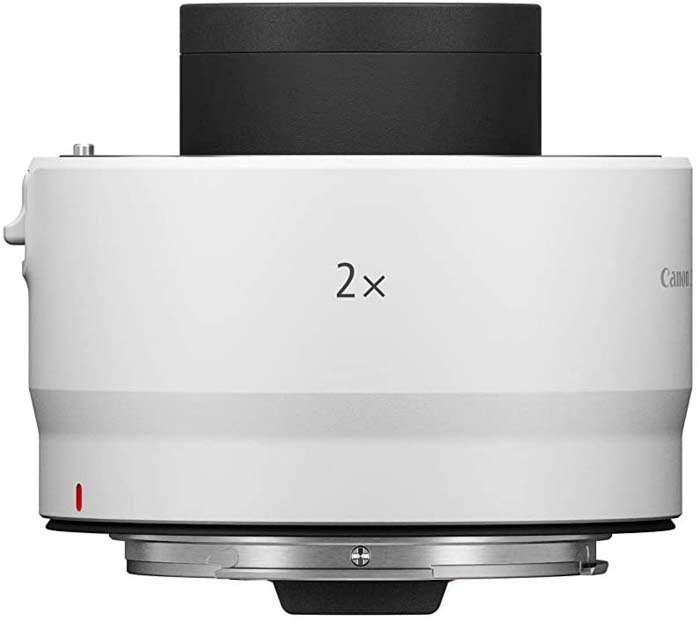
Sony E-mount
The Sony E-mount is the company’s standard mount for mirrorless cameras like the Alpha 1. Sony gives the FE designation to E-mount lenses that support a full frame sensor.
E lenses are designed for APS-C cameras, so they will cause cropping on full frame cameras. But FE lenses will work fine on APS-C cameras.
I have both the Sony E-mount teleconverters, and I’m generally pleased with them. I’ve noticed occasional softness in my shots, and the AF system sometimes has “frozen.” But it’s hard to tell if that’s due to the teleconverter or something else.
Note that the company has recently discontinued its A-mount lenses, so this list doesn’t include the A-mount Sony 1.4x Teleconverter SAL14TC or the Sony 2.0x Teleconverter SAL20TC. But you might still find used versions on Amazon.
1. Sony FE 1.4x Teleconverter SEL14TC
This teleconverter has a magnification of 1.4x but will reduce your widest aperture by one stop. It consists of five lens elements in four groups.
It measures 2.5 x 0.8″ (65 x 20 mm) and weighs 4.4 oz (126 g). And it works with the following Sony lenses:
No restrictions:
- Sony 70-200 mm f/2.8 G SSM II
- Sony 300 mm f/2.8 G SSM II
- Sony 500 mm f/4 G SSM
Manual focus only:
- Sony 70-400 mm f/4-5.6 G SSM II
- Sony 135 mm f/2.8 STF
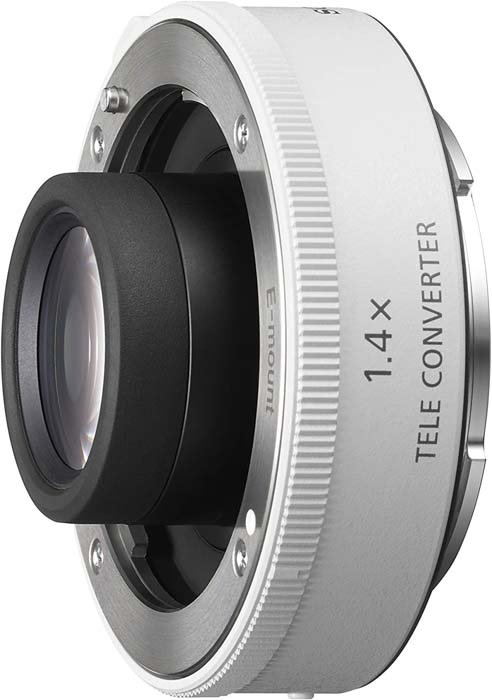
2. Sony FE 2.0x Teleconverter SEL20TC
This teleconverter has a magnification of 2x but will reduce your widest aperture by two stops. It consists of six lens elements in five groups.
It measures 2.5 x 1.7″ (62.4 x 42.7 mm) and weighs 7.3 oz (207 g). And it works with the following Sony lenses:
No restrictions:
- Sony 70-200 mm f/2.8 G SSM II
- Sony 300 mm f/2.8 G SSM II
Manual focus only:
- Sony 70-400 mm f/4-5.6 G SSM II
- Sony 135 mm f/2.8 STF
- Sony 500 mm f/4 G SSM
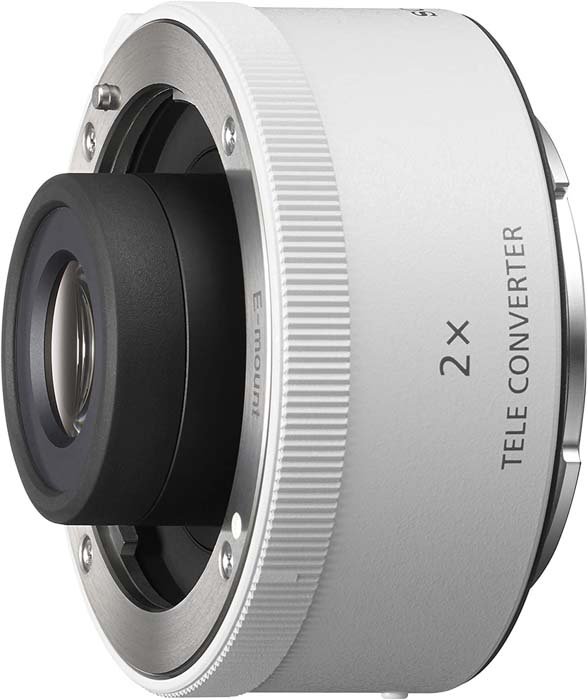
Fujifilm X-mount
The Fujifilm X-mount is found in their X Series APS-C cameras.
1. Fujinon XF 1.4x TC WR Teleconverter
This weather-resistant and dust-resistant teleconverter has a magnification of 1.4x but will reduce your widest aperture by one stop. It consists of seven lens elements in three groups. It measures 2.3 x 0.6″ (58 x 15 mm) and weighs 4.6 oz (130 g). It works with the following Fujinon lenses:
- Fujinon XF 50-140 mm f/2.8 R LM OIS WR
- Fujinon XF 100-400 mm f/4.5-5.6 R LM OIS WR
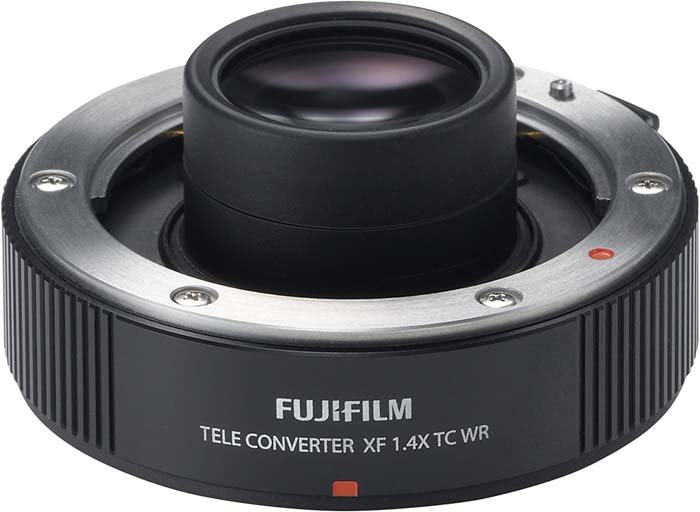
2. Fujinon XF 2x TC WR Teleconverter
This weather- and dust-resistant teleconverter has a magnification of 2x but will reduce your widest aperture by two stops. It consists of nine lens elements in five groups. It measures 2.3 x 1.2″ (58 x 30.2 mm) and weighs 9.2 oz (260 g). It works with the following Fujinon lenses:
- Fujinon XF 50-140 mm f/2.8 R LM OIS WR
- Fujinon XF 100-400 mm f/4.5-5.6 R LM OIS WR
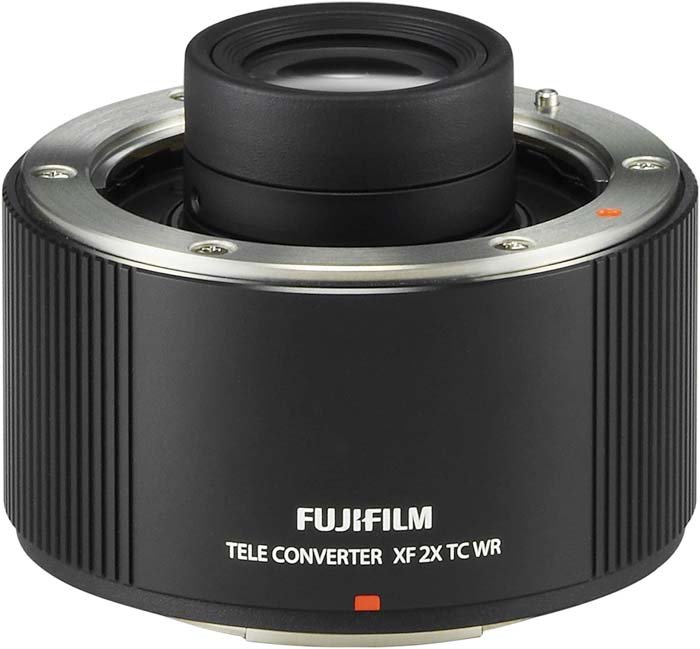
Fujifilm G-mount
The Fujifilm G-mount is found in their GFX Series medium format cameras. G-mount cameras can’t use lenses and teleconverters with the X-mount and vice versa.
1. Fujinon GF 1.4X TC WR Teleconverter
This weather-resistant and dust-resistant teleconverter has a magnification of 1.4x but will reduce your widest aperture by one stop. It consists of seven lens elements in three groups.
It measures 3.2 x 1.1″ (82 x 26.7 mm) and weighs 14.1 oz (400 g). And it works with the following Fujinon lenses:
- Fujinon GF 250 mm f/4 R LM OS WR
- Fujinon GF 100-200 mm f/5.6 R LM OIS WR
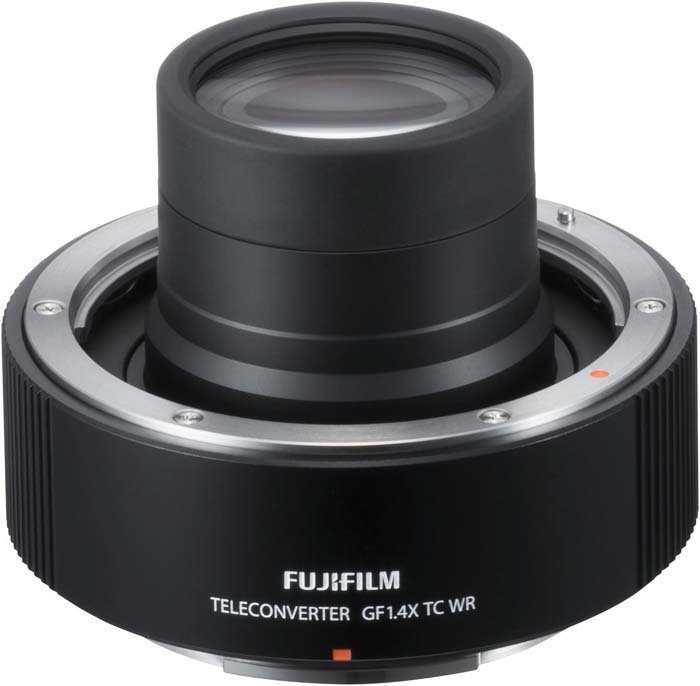
Panasonic Micro Four Thirds (MFT)
The Panasonic micro four thirds mount is found in their Lumix G camera range.
1. Panasonic DMW-TC14
This splashproof, dustproof, and freezeproof teleconverter has a magnification of 1.4x but will reduce your widest aperture by one stop. It consists of six lens elements in four groups.
It measures 2.3 x 0.9″ (58 x 22 mm) and weighs 4.2 oz (120 g). And it works with the following Panasonic lenses:
- Panasonic Leica DG Vario-Elmarit 50-200 mm f/2.8-4 Asph. Power OIS.
- Panasonic Leica DG Elmarit 200 mm f/2.8 Power OIS. (included with purchase)
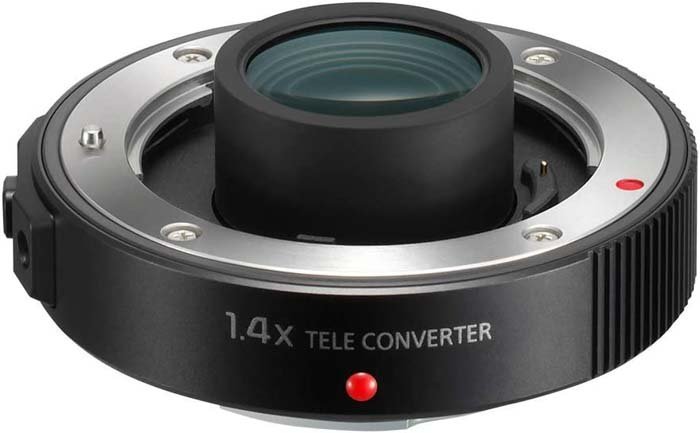
2. Panasonic DMW-TC20 2x Teleconverter
This splashproof, dustproof, and freezeproof teleconverter has a magnification of 2x but will reduce your widest aperture by two stops. It consists of eight lens elements in five groups.
It measures 2.3 x 1.3″ (58 x 34 mm) and weighs 5.6 oz (160 g). And it works with the following Panasonic lenses:
- Panasonic Leica DG Vario-Elmarit 50-200 mm f/2.8-4 Asph. Power OIS
- Panasonic Leica DG Elmarit 200 mm f/2.8 Power OIS
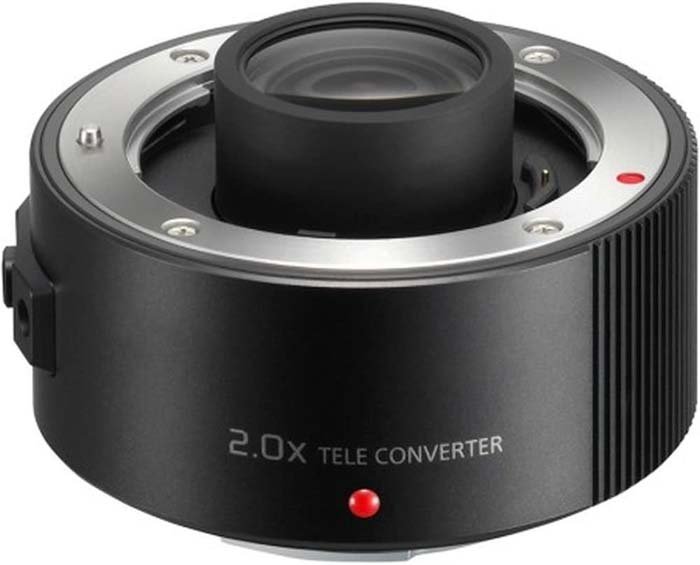
Panasonic L-mount
The Panasonic L-mount is found in their Lumix S mirrorless camera range. And it is supported by other lens manufacturers such as Sigma.
1. Panasonic DMW-STC14 1.4x Teleconverter
This splashproof, dustproof, and freezeproof teleconverter has a magnification of 1.4x but will reduce your widest aperture by one stop. It consists of seven lens elements in four groups.
It includes two ultra-high refractive (UHR) index lenses. And it measures 2.6 x 1.1″ (65.3 x 27.6 mm) and weighs 6.3 oz (180 g).
It works with the following Panasonic lenses:
- Panasonic Lumix S PRO 70-200 mm f/2.8 OIS
- Panasonic Lumix S PRO 70-200 mm f/4 OIS
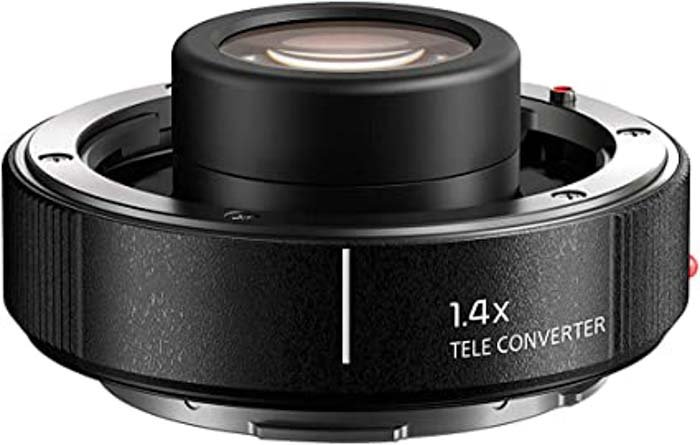
2. Panasonic DMW-STC20 2x Teleconverter
This splashproof, dustproof, and freezeproof teleconverter has a magnification of 2x but will reduce your widest aperture by two stops. It consists of eight lens elements in four groups.
It includes two ultra-high refractive (UHR) index lenses. And it measures 2.6 x 1.6″ (65.3 x 41.6 mm) and weighs 8.1 oz (230 g).
It works with the following Panasonic lenses:
- Panasonic Lumix S PRO 70-200mm f/2.8 OIS
- Panasonic Lumix S PRO 70-200mm f/4 OIS
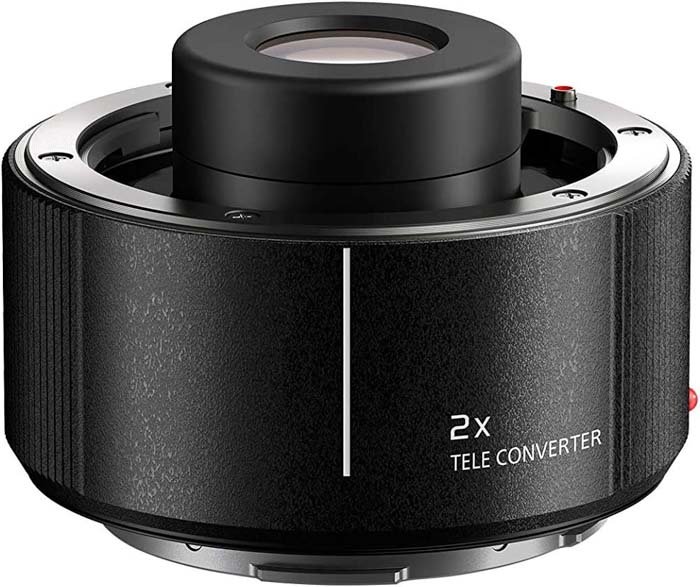
3. Sigma TC-1411 1.4x Teleconverter for L-mount
This splashproof and dustproof teleconverter has a magnification of 1.4x but will reduce your widest aperture by one stop. It consists of seven lens elements in four groups.
It measures 2.6 x 1.3″ (65.2 x 33.1 mm) and weighs 6.2 oz (175 g). And it works with the following Sigma lenses:
- Sigma 100-400 mm f/5-6.3 DG DN OS | Contemporary
- Sigma 105 mm f/2.8 DG DN MACRO | Art
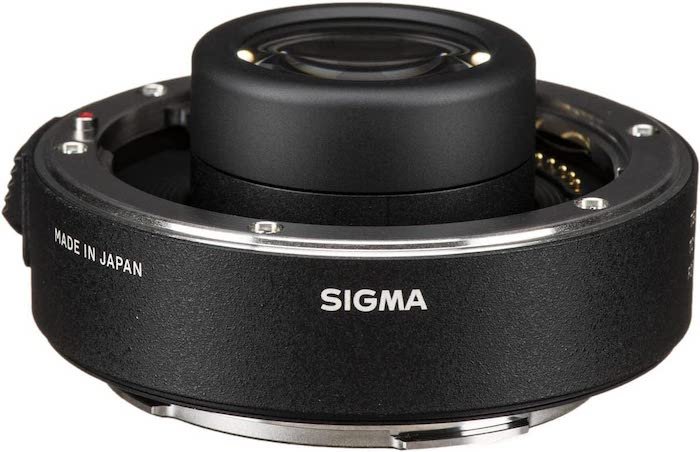
4. Sigma TC-2011 2x Teleconverter for L-mount
This splashproof and dustproof teleconverter has a magnification of 2x but will reduce your widest aperture by two stops. It consists of seven lens elements in four groups.
It measures 2.6 x 1.8″ (65.3 x 46.9 mm) and weighs 7.2 oz (205 g). And it works with the following Sigma lenses:
- Sigma 100-400 mm f/5-6.3 DG DN OS | Contemporary
- Sigma 105 mm f/2.8 DG DN MACRO | Art
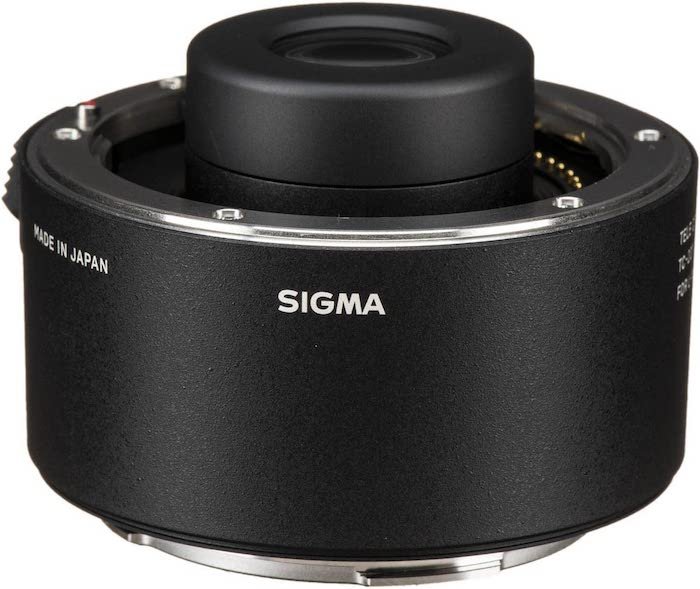
Olympus Micro Four Thirds (MFT)
The Olympus micro four thirds mount is found in their MFT camera range. You can buy either 1.4x or 2x teleconverters.
But their one lens—the Olympus M.ZUIKO DIGITAL ED 150-400 mm f/4.5 TC1.25X IS PRO—already has a built-in 1.25x teleconverter.
1. Olympus M.Zuiko Digital MC-14 1.4x Teleconverter
This dustproof, splashproof, and freezeproof teleconverter has a magnification of 1.4x but will reduce your widest aperture by one stop. It consists of six lens elements in three groups.
It measures 2.4 x 0.6″ (59.8 x 14.7 mm) and weighs 3.7 oz (105 g). And it works with the following Olympus lenses:
- Olympus M.Zuiko Digital ED 40-150 mm f/2.8 PRO
- Olympus M.Zuiko Digital ED 100-400 mm f/5.0-6.3 IS
- Olympus M.Zuiko Digital ED 300 mm f/4 PRO
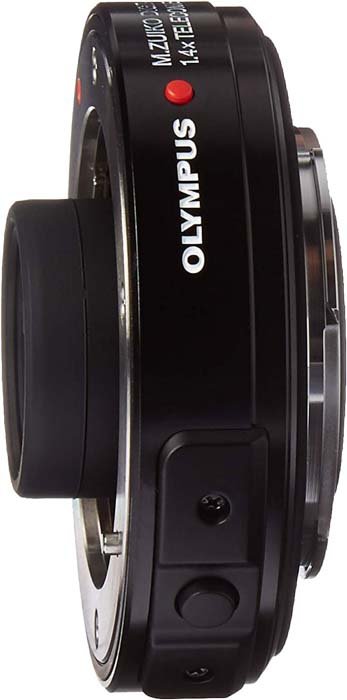
2. Olympus MC-20 M.Zuiko Digital 2x Teleconverter
This dustproof, splashproof, and freezeproof teleconverter has a magnification of 2x but will reduce your widest aperture by two stops. It consists of nine lens elements in four groups.
It measures 2.4 x 1.0″ (59.8 x 25.9 mm) and weighs 5.3 oz (150 g). And it’s compatible with the following Olympus lenses:
- Olympus M.Zuiko Digital ED 40-150 mm f/2.8 PRO
- Olympus M.Zuiko Digital ED 100-400 mm f/5.0-6.3 IS
- Olympus M.Zuiko Digital ED 300 mm f/4 PRO
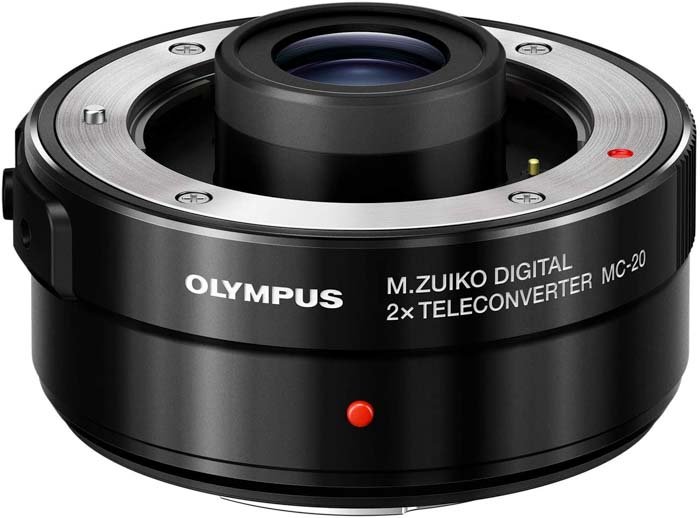
Pentax K-mount
You can find the Pentax K-mount in their K Series of film SLRs.
1. Pentax 1.4x HD PENTAX-DA AF Rear Converter AW
This waterproof and dustproof teleconverter has a magnification of 1.4x but will reduce your widest aperture by one stop. It consists of four lens elements in three groups.
It has a high-definition (HD) coating. And it measures 2.6 x 0.8″ (65 x 20 mm) and weighs 4.4 oz (126 g).
This is the first Pentax teleconverter to offer autofocus compatibility. You can use it with most Pentax lenses apart from some shorter primes. But there are autofocus limitations if used with other lenses.
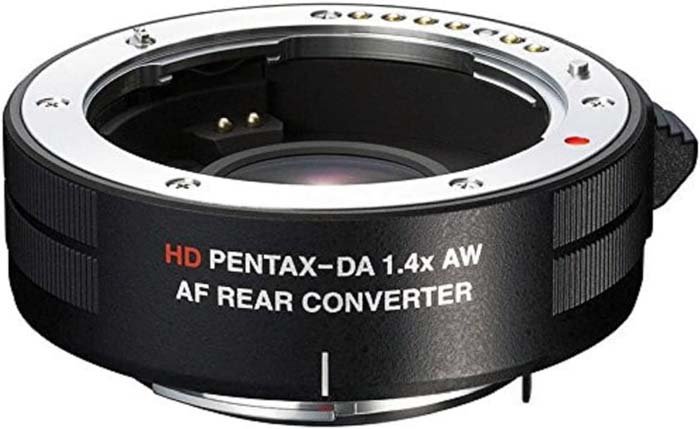
Other Third-Party Manufacturers
You can buy teleconverters from third-party manufacturers. But they’re not generally as good as the own-brand models.
Plus, they often don’t support all the camera and lens functions. So they’re best avoided!
Teleconverter Buying Guide
The first thing to bear in mind when buying a teleconverter is compatibility. Not only do you need a teleconverter made by the right manufacturer, but you also need one that works for the particular mount your camera has.
My Sony teleconverters have the E-mount specifically designed for the Sony Alpha 1 mirrorless camera and its native lenses. If I’d bought an A-mount converter, it wouldn’t have fitted!
Nowadays, you increasingly find teleconverters specifically designed for individual lenses. In fact, I had one myself. I used to have a Nikon 800mm lens. And it came with a 1.25x teleconverter that extended it to 1000mm! The advantage of having dedicated converters that match specific lenses is that you minimize optical deterioration.

Compatibility Issues and Magnification
The danger of buying a one-size-fits-all teleconverter is that you compromise on the resolution, functionality, speed, and accuracy of the AF system. The other compatibility issue is the maximum aperture of your lens. Sometimes, teleconverters will only work with f/4 lenses. So you must be sure that applies to yours!
Your next consideration will probably be the magnification. Teleconverters are generally either 1.4x or 2x, but you do occasionally find other values such as 1.7x. The 1.4x converters are a safer choice as they’re lighter, only “cost” one stop of light, and generally won’t affect image quality as much.
The magnification might not seem like very much. But it will probably help you fill a gap in your camera bag.
When I switched to the Sony mirrorless system, I knew from experience that I took most of my shots with my old 800 mm lens. But the longest Sony made was only 600 mm!
The only way I could get to my favorite length was to buy a 600 mm lens and pair it with a 1.4x teleconverter. That gave me an effective focal length of 840 mm.
Downsides to a Teleconverter
There are a few downsides to using a teleconverter:
- It reduces the widest aperture of telephoto lenses—typically one stop for a 1.4x converter and two stops for a 2x teleconverter. That means it’s not ideal for low-light situations.
- It reduces image quality. There is simply more glass for the light to pass through. So there’s more potential for optical distortion—particularly with a 2x teleconverter.
- It might interfere with the AF system. The acquisition time might be affected, the lens might end up “hunting” rather than finding focus, or you might be stuck having to use manual focus. That’s not great when you’re a wildlife photographer like me!
- It probably won’t work with a wide-angle prime or zoom lens.

Other Magnification Options
If you’re looking for a longer focal length to give you more photographic reach, you have several options besides a converter:
- Buy another lens.
- Use your existing equipment and just crop more aggressively in post-processing.
- Change your viewfinder to a crop ratio such as the Nikon DX format.
To summarise, the main factors you need to consider when buying a teleconverter include compatibility, magnification, and, of course, price. But you must determine if a teleconverter is your best option for your photography.
Conclusion
Buying a teleconverter is an affordable way to extend the focal length of your telephoto lenses. Teleconverters work with zooms and primes, and they’re particularly useful for the kind of fast prime lenses popular with wildlife photographers.
Yes, there is a penalty to be paid regarding image quality, maximum aperture, and AF performance. But a teleconverter is much cheaper than buying a longer lens!
You’re probably better off getting a 1.4x rather than a 2x teleconverter. But a lot depends on the specific lenses. Some teleconverters are designed to work with a particular lens. So they’ll probably offer better optical performance.
So check the compatibility. It’s not enough just to buy from the right manufacturer, like the best Nikon teleconverter. You also need to ensure the product works with your particular lens—and any others you may be considering buying. The last thing you want is to buy something that leaves you having to use manual focus!
Check out our Wonderful Wildlife e-book to learn how to take fantastic close-ups of animals in the wild!







